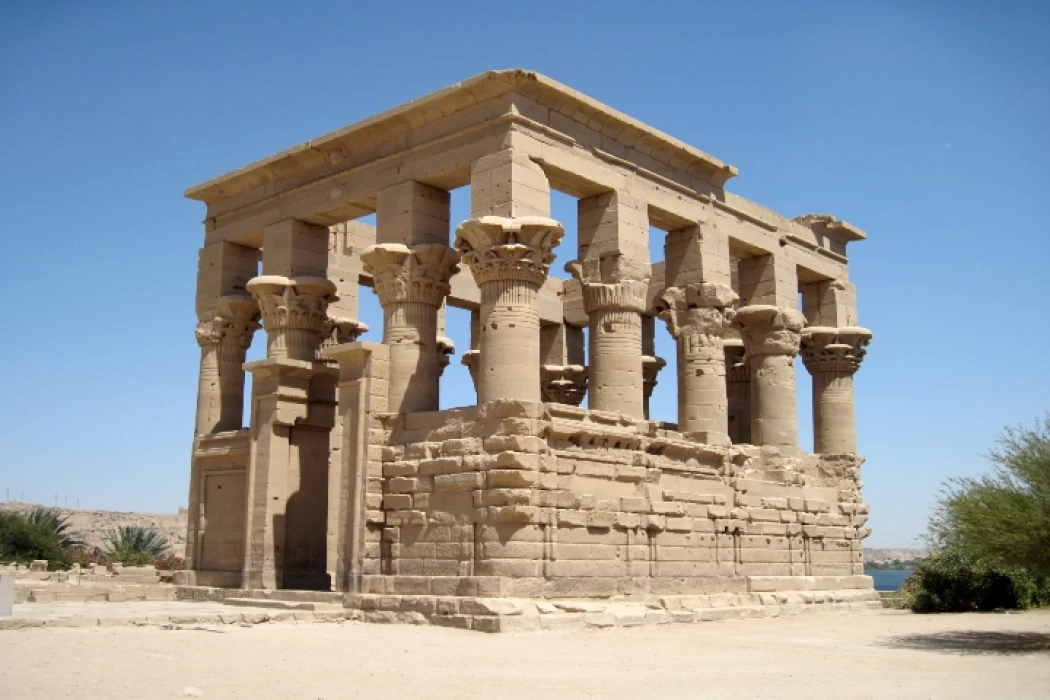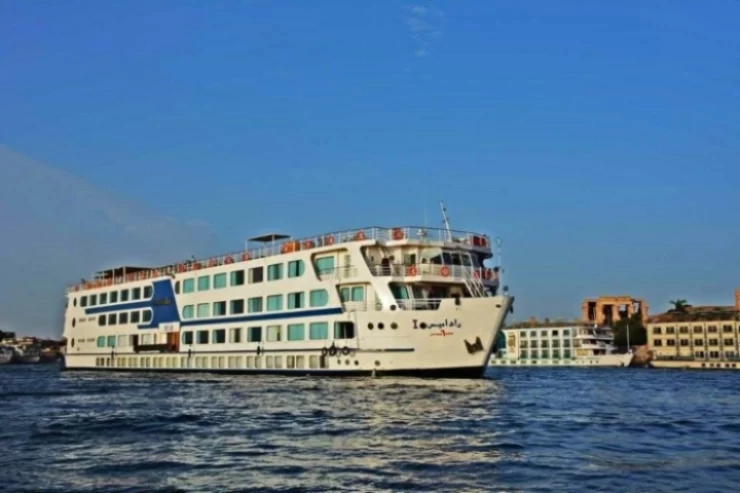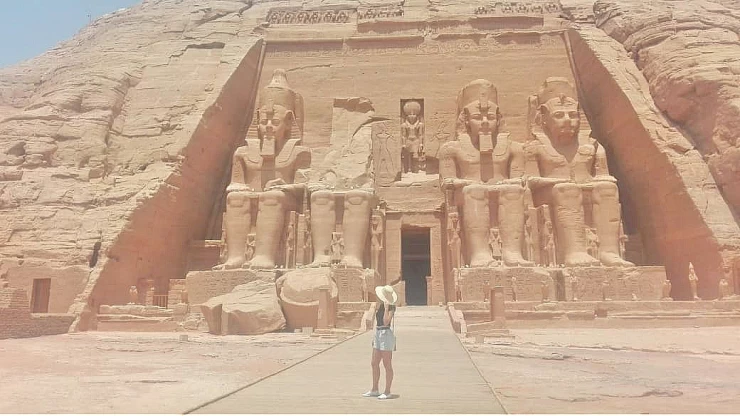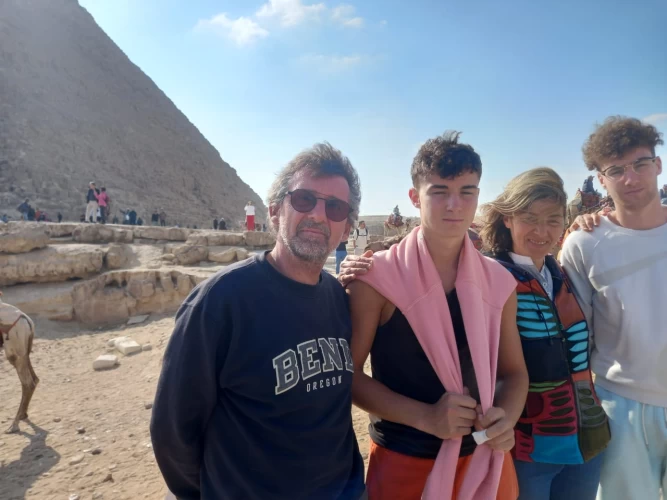
The Kiosk of Trajan
The Kiosk of Trajan is one of many archaeological sites in the Egyptian governorate of Aswan. Professor of Archaeology Dr. Mukhtar Al-Kasbani claims that the Trajan kiosk is a very elegant unfinished building. It is unique to this island, is a Roman-era structure without a roof or a floor, and dates back to that time period. You can visit it with our guided Egypt travel packages to learn about its history.
Al-Kasbani adds that Trajan consists of a rectangular room surrounded by fourteen columns with flowering crowns. Small walls were built between the columns to carry inscriptions and decorations, but those inscriptions were not completed, it will be more interesting to see it yourself during Egypt tours.
The east entrance, the west entrance, and a smaller third door in the north are the three entrances that the Kiosk of Trajan has. This building, one of the most beautiful on the island, has come to stand in for all of the temples on Philae. There are inscriptions and decorations between the columns, but they are partial, and the only ones we have represent Emperor Trajan lighting incense in front of Isis and Osiris.
What is the Kiosk of Trajan?
The Kiosk of Trajan is already considered an unfinished building, but it is a very elegant building. It's also that special kiosk that already exists to see during your Aswan day tours. This island, as its origin and construction date back to Roman times, and as we mentioned, it is an unfinished building because, despite its splendor, there is still no roof or floor, it's an interesting tour to try during your Egypt classic tours.
The Trajan kiosk is surrounded by up to fourteen columns, each of which has what appears to be a series of blossoming crowns. A handful or a group of those were constructed for a tiny wall that stands between numerous columns, each of which bears incomplete inscriptions and opulent ornaments that represent the greatness of the time.
How was the design and construction of the Kiosk of Trajan?
The Trajan Kiosk has three entrances., The east is the first entrance; the second entrance, is already open to the west and is still being built; Additionally, there was a third door that was thought to be slightly smaller. It was located in the north. Prepare a camera to take the most beautiful pictures during your Egypt luxury tours in the Kiosk of Trajan.
One of the most exquisite architectural structures was an archaeological structure. which had been constructed on that island, where he was already the representation of the temples across the entire Agilika island of Philae, Between these columns, there are further inscriptions and embellishments, but there are a lot more of these amazing inscriptions. But it's not done yet. We now only possess two of their inscriptions, one of which depicts the great emperor Trajan operating and burning incense in front of the gods Isis and Osiris at The Kiosk of Trajan.
Emperor Traian
Trajan's Kiosk (locally called Pharaoh's Bed) is an incomplete hypaethral temple on Agilkia Island in southern Egypt. Trajan, the Roman emperor who ruled from 98 to 117 AD, is credited with building the monument because some of the interior reliefs show him as a pharaoh.
Emperor Trajan or Traian, Marcus Alibius Nerva Trainus August (18 September 53 – 9 August 117), the second Roman Antonine emperor, and the thirteenth Roman emperor (28 January 98 - 9 August 117) reached the height of the Roman Empire.
Trajan established Dacia as a Roman Empire province, utilizing Roman colonists and acquiring Dacia's gold mines. He discovered the hidden Decebalus treasure, containing 165 tons of gold and silver.
'The Roman emperor was the second "five good emperors" to rule the Roman Empire from 96 to 180 The island of Philae is one of the most visited sites if you plan any of Aswan day trips our varieties of tours from Cairo and if you want to spend more time in Egypt take a look at Egypt day tours, we are so glad to organize your trip.
Dieter Arnold describe los quioscos egipcios como "marquesinas independientes formadas por columnas unidas por muros pantalla". Las puertas atraviesan los muros pantalla de los quioscos tanto perpendicularmente como en el eje del camino de la procesión.

















